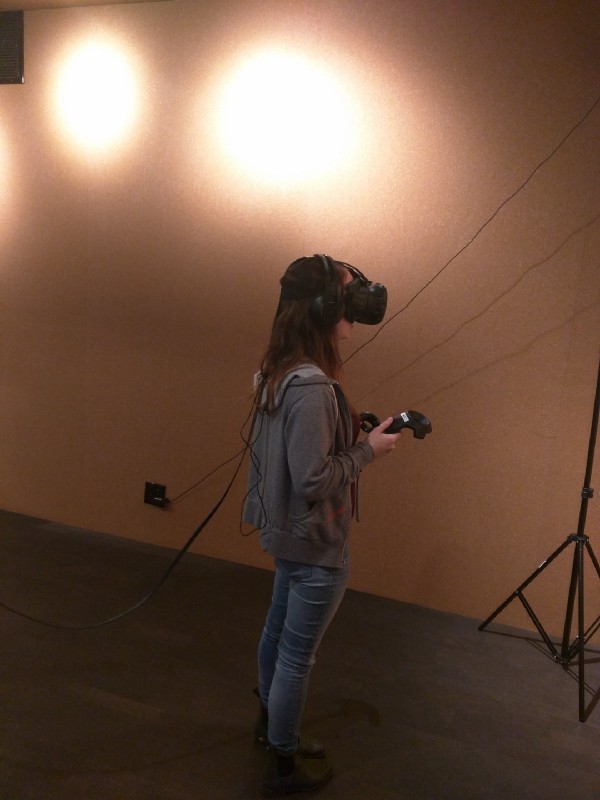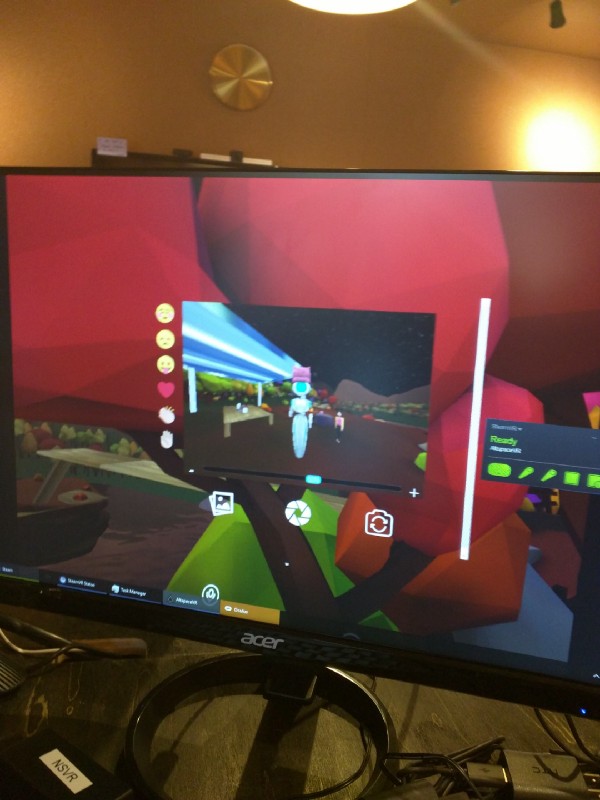Mindful Realities Makeathon: Dragon
Who are you?
Who are you?
- Dani Sandoval — Communicator (HCDE, BS)
- Laura Lantz — Domain Expert (Game Design)
- Susan Oldham — Researcher (HCDE, MS)
- Nicole Carter — Researcher (Psychology Undergrad)
- Gabriela Madrid — Creator (HCDE, MS)
What problem do you want to address?

Our Affinity Diagram of “How Might We…” statements
How might we give people the flexibility to share / not share different aspects of their identity to bridge real world divides*?
*Real World Divides — political, religious, physical ability, etc. There are a lot of assumptions that are made about people, depending on their point of view. We want to understand how people’s experiences in virtual reality can have an impact on their understanding of one another’s point of view
Possible Solutions?
- “Profile-building” with questions and answers to match users based on likes and interests
- Let users choose their own match by having themed rooms
- Mask user’s identity (through avatar or voice modification) and personal interests until they both agree on “closeness”-level (a la Facebook’s profile settings — public, friends, close friends)
- Enable new connections through current connections (a la LinkedIn)
- New interactions to mute-by-default, “knock to join”, or mute multiple users at a time
In-VR Ethnography
Our group conducted an ethnography with our human guinea-pig (and VR newbie) Nicole:
Playing with Selfies, Gestures and Teleportation
During and after this experience, our team took notes on Nicole’s usage of the room. She learned how to use the controls, made s’mores with another avatar, and learned how to take a selfie.
Summarize the journey
Who are you designing for? What is their journey?
New users to Social VR platforms — onboarding for those who haven’t necessarily used VR before or the platform.

A new user figures out how to move within a Social VR space
Journey:
- Person wants to use VR to communicate with other people — especially from other cultures
- Person enters social platform to satisfy this want/need
- Person creates an identity within the system
- Person interacts with others within the system
Who is your solution focused on?
New users of Social VR
Why did you choose this person?
The majority of people have not tried VR. How do we bring them into a comfortable experience to meet new people and form new relationships.
What do they know, not know?
- Person knows they want to connect with others
- Person does not know how people will interact with them based on their avatar’s appearance, personal desires, or
Where are they going?
Into a room with others, to have conversations and learn new things.
Craft your experience and learnings
What is your final experience?
An “authentic” avatar to share with only those you allow. A “public” avatar has the ability to modify your appearance, voice and any other personal identifiable information (like social media links, etc.)

A portrait of an avatar as a young robot
How does this address your initial problem statement?
For those who may be discriminated against in the real world, jumping into a social VR experience may feel intimidating. By providing the ability to not share information that, in the real world, might make a user feel vulnerable to abuse or discrimination, we empower them in the virtual world. With these tools, users can feel comfortable expressing themselves, their ideas and reveal their identity over time.
Are there any gaps in the experience?
TBD — See the comments!
What advice would you give to those who are building social VR experiences? How could they apply your idea? (Optional)
TBD — See the comments!
References. Did you use any resources/articles throughout your process? If you can link to them below, that’d be great!
TBD — See the comments!
